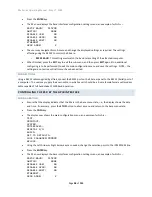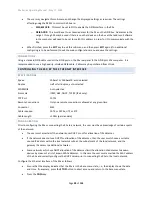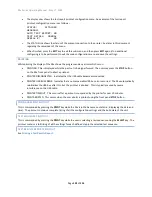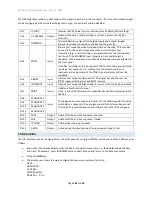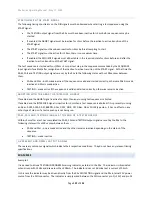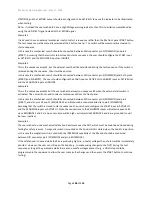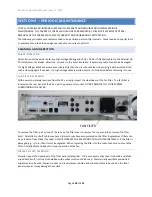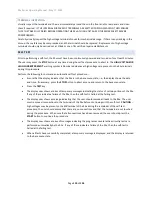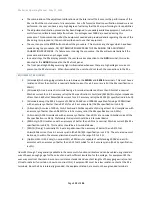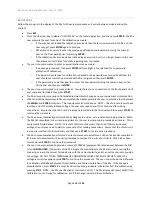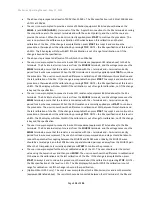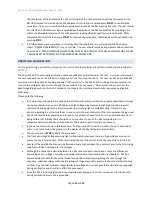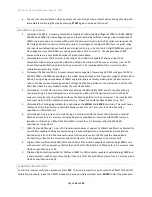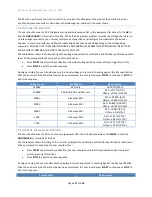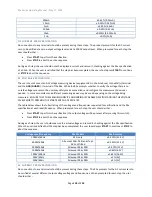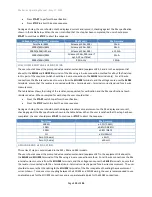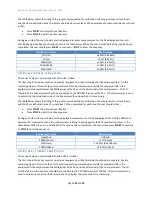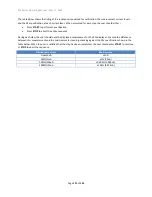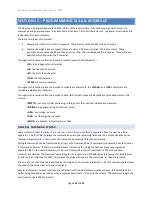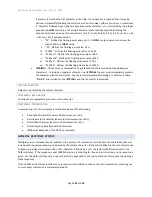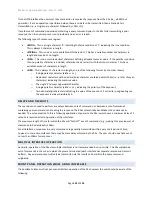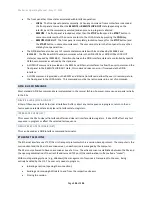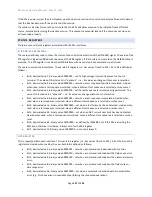
95x Series Operating Manual - May 17, 2022
Page
112
of
155
•
The combination of the adjustment calibration and the internal self-test ensures the performance of the
95x in all but the most unusual of circumstances. Even if a formal calibration verification procedure is not
performed, the user can have a very high degree of certainty that the 95x is performing to its capabilities.
•
The adjustment calibration procedure has been designed to use widely available equipment, such as the
multi-function calibrators available from Fluke. No voltages over 1000V are needed during this
procedure. This document describes the equipment needed and provides details regarding the use of the
95x during this procedure; it does not describe how to use that equipment.
•
The user can press the
STOP
button to abort the procedure. This discards any changes which have been
made during the procedure. DO NOT REMOVE POWER FROM THE 95x DURING THE ADJUSTMENT
CALIBRATION PROCEDURE. If a failure occurs during the procedure, the 95x will automatically halt the
procedure and discard any changes made.
•
In several steps the 95x display prompts the user to make connection to the
GND
terminal; this is also
denoted as the
GUARD
terminal on the 95x front panel.
•
The front panel High Voltage warning light is illuminated whenever there are high voltages or currents
present on the 95x terminals. When illuminated the user should not touch the connections to the 95x.
EQUIPMENT REQUIRED
1.
(All models) A shorting plug suitable for use between the
SENSE+
and
SENSE-
terminals. This must have a
resistance of less than 5m
Ω
at a nominal 30mAdc current for a 4:1 accuracy ratio (the 95x specification is
20m
Ω
).
2.
(All models) A true 4-wire short circuit having a 4-terminal resistance of less than 0.5m
Ω
at a nominal
30mAdc current for a 4:1 accuracy ratio (the 95x specification is 2m
Ω
) and (952i/4i/9i only) an impedance
of less than 1.625u
Ω
at 5Arms/60Hz current for a 4:1 accuracy ratio (the 952i/4i/9i specification is 6.5u
Ω
).
3.
(All models except the 959i) A source of 100Vdc, 500Vdc and 1000Vdc capable of driving a 100M
Ω
load
with an accuracy of better than ±0.075% for a 4:1 accuracy ratio (the 95x specification is ±0.3%).
4.
(All models) A source of 100uA, 1mA, 10mA and 50mAdc capable of driving at least 1.5V compliance with
an accuracy of better than ±0.0625% for a 4:1 accuracy ratio (the 95x specification is ±0.25%).
5.
(All models) A 10K
Ω
resistance with an accuracy of better than ±0.2% at a nominal 0.5mAdc current (the
95x specification is ±0.8%). Preferably this resistor should be a 4-terminal device.
6.
(959i only) A 10
Ω
resistance with an accuracy of better than ±0.2% at a nominal 30mAdc current (the 95x
specification is ±0.8%). This resistor should be a 4-terminal device.
7.
(952i/4i/9i only) A nominally 1
Ω
4-wire impedance with an accuracy of better than ±0.375% at
1Arms/60Hz current for a 4:1 accuracy ratio (the 952i/4i/9i specification is ±1.5%). The actual value must
be known to within the accuracy limits and must be in the range 0.9 to 1.1
Ω
.
8.
(Option HSS or HSS-2 only) A nominal 1M
Ω
± 20% resistor capable of withstanding 1000V and a milli-
ammeter with an accuracy of better than ±0.25% at 1mAdc for a 4:1 accuracy ratio (the 95x specification
is ±1%).
Items #3 through 7 are generally available in the same multi-function calibrator and can be cabled using standard
wire of heavy enough gauge for the current and with sufficient insulation for the voltage. For equipment #2 the
user may construct their own 4-wire zero resistance standard and use short lengths of heavy gauge wire (contact
Vitrek for details if uncertain on how to construct this). Equipment #1 must be a low resistance short at the 95x
terminals. Since the 95x is internally grounded, the equipment listed here must not have grounded terminals.

